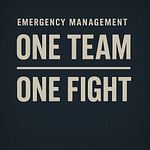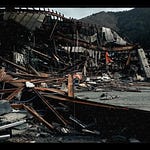Bayes’ Theorem Applying It To Emergency Management
Mental models help us with making decisions under stress. They give us a starting point, think of how we teach triage, “start where you stand”. This applies to decision-making as well during a disaster or crisis, start with information that you have. We can make the adjustments as more or better information is obtained. This brings me to the concepts of Bayes’ Theorem.
Thomas Bayes was an English minister in the 18th century, whose most famous work, “An Essay toward Solving a Problem in the Doctrine of Chances,” The essay did not contain the theorem as we now know it but had the seeds of the idea. It looked at how to adjust our estimates of probabilities when encountering new data that influence a situation. Later development by French scholar Pierre-Simon Laplace and others helped codify the theorem and develop it into a useful tool for thinking.
Now you do not need to be great at math to use this concept. I still need to take off my shoes to count to 19. . More critical is your ability and desire to assign probabilities of truth and accuracy to anything you think you know and then be willing to update those probabilities when new information comes in.
We talk about making decisions based on the new information that has come in, however, we often ignore prior information, simply called “priors” in Bayesian-speak. We can blame this habit in part on the availability heuristic—we focus on what’s readily available. In this case, we focus on the newest information, and the bigger picture gets lost. We fail to adjust the probability of old information to reflect what we have learned.
The big idea behind Bayes’ theorem is that we must continuously update our probability estimates on an as-needed basis. Let’s take a look at a hurricane as our crisis. We have all seen the way it tracks and can predict that it may make landfall at a certain time and location. We can use past storms as predictors of how this hurricane may act and the damage it could cause. However, new information may come to light on the behavior of the storm. This however should not necessarily negate the previous experience and information you have on hand.
In their book The Signal and the Noise, Nate Silver and Allen Lane give a contemporary example, reminding us that new information is often most useful when we put it in the larger context of what we already know:
Bayes’ theorem is an important reality check on our efforts to forecast the future. How, for instance, should we reconcile a large body of theory and evidence predicting global warming with the fact that there has been no warming trend over the last decade or so? Skeptics react with glee, while true believers dismiss the new information.
A better response is to use Bayes’ theorem: the lack of recent warming is evidence against recent global warming predictions, but it is weak evidence. This is because there is enough variability in global temperatures to make such an outcome unsurprising. The new information should reduce our confidence in our models of global warming—but only a little.
The same approach can be used in anything from an economic forecast to a hand of poker, and while Bayes’ theorem can be a formal affair, Bayesian reasoning also works as a rule of thumb. We tend to either dismiss new evidence or embrace it as though nothing else matters. Bayesians try to weigh both the old hypothesis and the new evidence in a sensible way.
So much of making better decisions hinges on dealing with uncertainty. The most common thing holding people back from the right answer is instinctively rejecting new information, or not integrating the old.
To better serve our communities, have a mental model, work with it and use it to make better decisions.
Podcasts
The Todd De Voe Show
School Shootings and Emergency Management
The K-12 School Shooting Database research project is a widely inclusive database that documents each and every instance a gun is brandished is fired, or a bullet hits school property for any reason, regardless of the number of victims, time, or day of the week.
The School Shooting Database Project is conducted as part of the Advanced Thinking in Homeland Security (HSx) program at the Naval Postgraduate School’s Center for Homeland Defense and Security (CHDS).
Prepare Respond Recover
Due to the uptick of mass shootings over the years, many professions outside of law enforcement are now being trained in active shooter response programs. But have you ever thought about who teaches the law enforcement officers themselves? Join prepare.respond.recover. host Todd De Voe as he talks with Erik Franco, the CEO of "High Speed Tac Med", one of the nation’s most sought-after active shooter training programs for law enforcement and firefighting. Learn about “Run, Hide, Fight” and how this training is preparing law enforcement officers to tackle an active shooter situation as quickly and efficiently as possible.
HSTM - https://highspeedtacmed.com/
If you would like to learn more about the Natural Disaster & Emergency Management (NDEM) Expo please visit us on the web - https://www.ndemevent.com
Business Continuity Today
Training for Active Shooters Beyond The Response
Active shooting scenarios focus on the police response, and the larger emergency management role during these complex incidents is often overlooked. However, they are multi-week, multi-jurisdictional incidents requiring command & control, interoperable communications, and a host of other services.
Supporters
https://www.disastertech.com/
https://titanhst.com/














Share this post